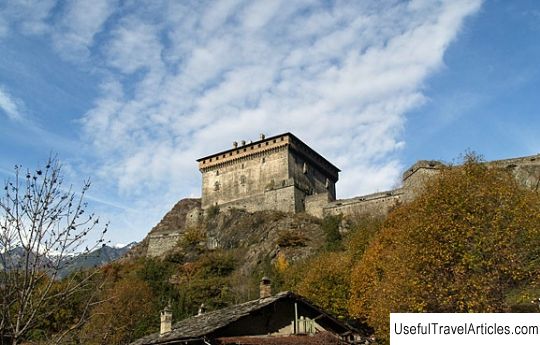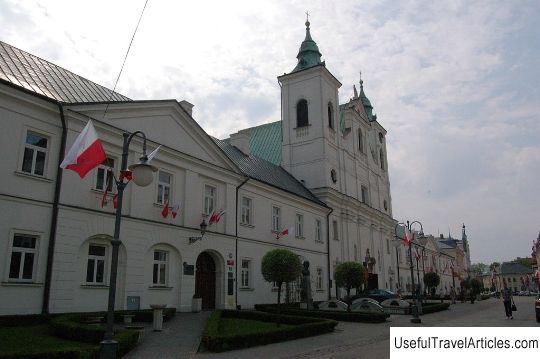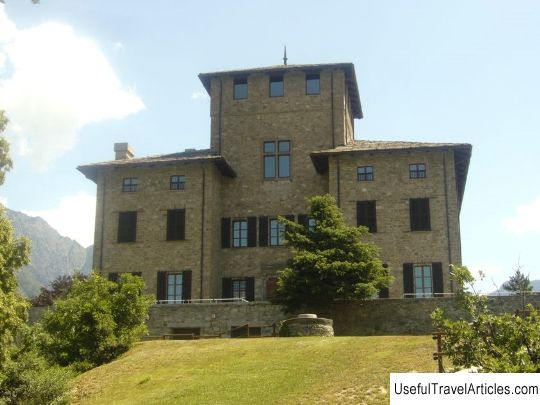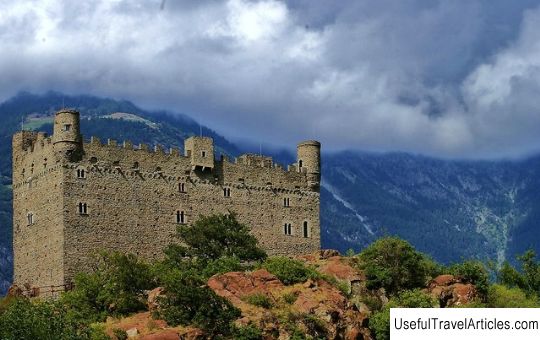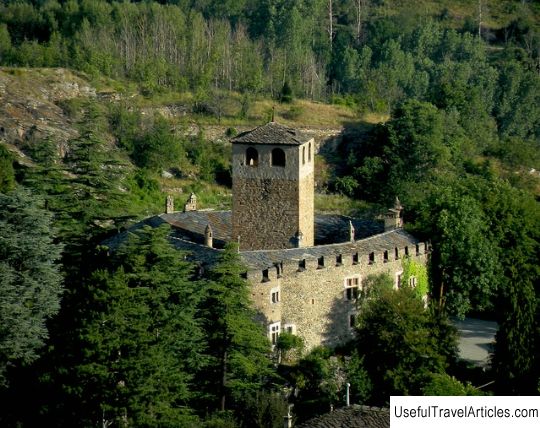Castello di Issogne description and photos - Italy: Val d'Aosta
Rating: 8,2/10 (3903 votes) 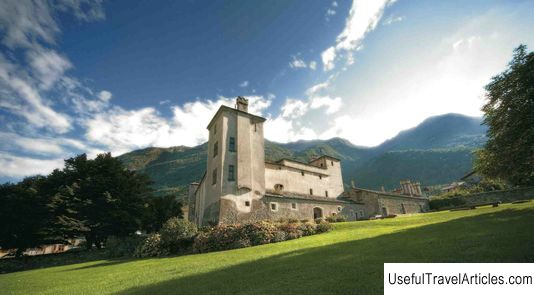
Castello di Issogne description and photos - Italy: Val d'Aosta. Detailed information about the attraction. Description, photographs and a map showing the nearest significant objects. The title in English is Castello di Issogne. Photo and descriptionThe Castle of Issogne, standing on the right bank of the Dora Baltea in the center of the town of Issogne, is one of the most famous estates in the entire Val d'Aosta region of Italy. This aristocratic Renaissance residence is very different in appearance from the rather ascetic castle of Castello di Verres, which stands on the opposite bank of the river. The main attractions of Castello di Issogne are its pomegranate-shaped fountain and richly decorated portico with rare examples of medieval Alpine painting and a cycle of frescoes depicting scenes from the daily life of the late Middle Ages. The first mentions of the Issogne castle date back to 1151 - then it was a fortified structure that belonged to the Bishop of Aosta. And some parts of the walls found in the basements of the castle may be fragments of a 1st century BC Roman villa. In 1333, tensions between the bishop of Aosta and the De Verrechio family, the rulers of the town of Verres, reached their limit, and Castello di Issogne was attacked and seriously damaged in a fire. And in 1379, the castle became the property of the ruler of Verres Ibleto di Shallana. It was he who turned the episcopal fortress into an elegant Gothic residence with a number of towers and office buildings. In the 15th century, with the construction of new buildings, the castle acquired the shape of a horseshoe with a courtyard in the center. It was then that the decorations of the portico and the aforementioned pomegranate fountain were completed. Then, until the beginning of the 19th century, the castle passed from hand to hand, but remained the property of one family - Shallan, until the last representative of the family died in 1802. Castello di Issogne, by that time, it had been in desolation for several years, and completely fell into decay. Only at the end of the 19th century, the Turin artist Vittorio Avondo, who bought the castle, restored it and refurbished it with antique furniture. In 1907, Avondo donated the castle to the Italian government, and in 1948 it became the property of the government of the autonomous region of Val d'Aosta. Today Castello di Issogne is open to visitors. The courtyard of Castello di Issogne, bounded on three sides by buildings and on the fourth by a garden, forms one of the most interesting spaces of the castle. You can get into it through the entrance on the west side. The facades of the castle, facing the courtyard, are decorated with frescoes depicting the heraldic emblems of various branches of the Shallan clan. In the center is the same fountain - a pomegranate tree "grows" from an octagonal stone bowl, made of wrought iron. At the same time, the leaves of the unusual "tree" do not belong to a pomegranate, but to an oak, and tiny dragonflies are placed between them. In the eastern part of the courtyard, there is a famous portico with round arches and groin vaults. It was through it that the main entrance to the castle was carried out. In total, Castello di Issogne has about 50 rooms, although only 10 of them are open to tourists today. On the ground floor there is a dining room with 19th century furniture, a kitchen divided into two parts by a wooden lattice, the so-called "hall of justice", entirely painted with frescoes and decorated with marble columns, an infirmary and service rooms. On the second floor, which is reached by a stone spiral staircase, there are the chateau owners' quarters and a small chapel. Finally, on the third floor, you can inspect the room, known as the Chamber di San Maurizio, with a large stone fireplace, the small personal chapel of Giorgio di Challana, the so-called Hall of the King of France, where King Charles VIII stayed in the 15th century, the Tower Room and the Little Countess's Room ". In the east wing of Castello di Issogne, closed to the public, there is a covered gallery with criss-crossing vaults. According to legend, on moonlit nights on the roof of the gallery you can see the ghost of Bianca Maria Gaspardone, the first wife of Renato di Challan, who was sentenced to death for the murder of her lover and was executed in 1526.         We also recommend reading Mikkeli Art Museum description and photos - Finland: Mikkeli Topic: Castello di Issogne description and photos - Italy: Val d'Aosta. |
